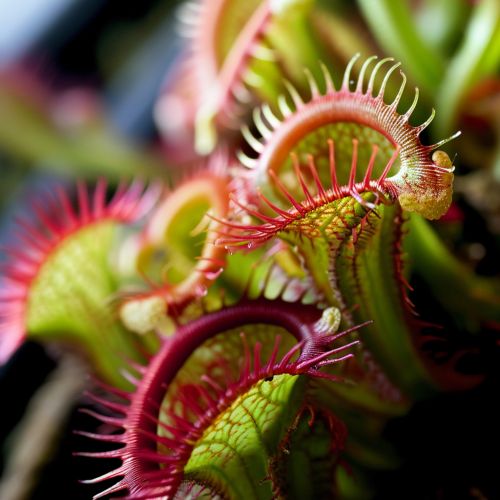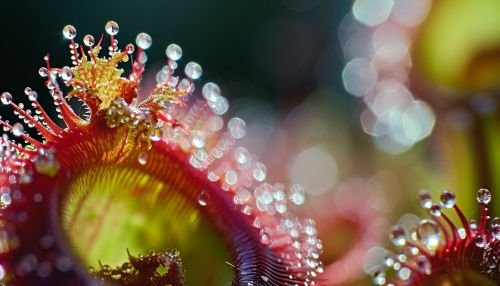Evolution of Carnivorous Plants
Introduction
Carnivorous plants, also known as carnivores, are a unique group of plants that have evolved to derive some or most of their nutrients from trapping and consuming animals or protozoans, typically insects and other arthropods. This adaptation has evolved independently in several plant species around the world, leading to a diverse range of carnivorous plants with different trapping mechanisms and prey preferences.


Evolutionary Origins
The evolutionary origins of carnivorous plants are not entirely clear due to the scarcity of fossil evidence. However, molecular phylogenetic studies suggest that carnivory in plants has evolved independently at least six times and possibly as many as nine times. This suggests that the ability to capture and digest prey has provided a significant evolutionary advantage in certain environments, particularly those with nutrient-poor soils.
Trapping Mechanisms
Carnivorous plants have developed a variety of trapping mechanisms to capture their prey. These include pitfall traps, flypaper traps, snap traps, bladder traps, and lobster-pot traps. Each of these trapping mechanisms has evolved independently in different lineages of carnivorous plants, reflecting the diversity of strategies that these plants have developed to capture and digest their prey.
Pitfall Traps
Pitfall traps, also known as pitcher plants, are one of the most common types of carnivorous plants. These plants have evolved a specialized leaf structure that forms a deep cavity filled with digestive enzymes. Insects and other small creatures are lured into the trap by the plant's nectar and are unable to escape due to the slippery inner surface of the pitcher.
Flypaper Traps
Flypaper traps are another common type of carnivorous plant. These plants produce a sticky substance that traps insects and other small creatures. Once the prey is stuck, the plant slowly wraps its leaves around the prey and begins the digestion process.
Snap Traps
Snap traps are perhaps the most famous type of carnivorous plant, with the Venus flytrap being the most well-known example. These plants have a highly specialized leaf structure that snaps shut when triggered by the movement of potential prey.
Bladder Traps
Bladder traps are a unique type of carnivorous plant found in the genus Utricularia, also known as bladderworts. These plants have small, bladder-like structures that create a vacuum to suck in small aquatic creatures.
Lobster-Pot Traps
Lobster-pot traps are a less common type of carnivorous plant. These plants have a complex, maze-like structure that lures prey into the trap but makes it difficult for them to find their way out.
Prey Preferences
Carnivorous plants typically prey on insects and other arthropods, but some species have been known to trap and digest larger creatures, including frogs and small mammals. The type of prey that a carnivorous plant captures often depends on its specific trapping mechanism and its habitat.
Adaptations
Carnivorous plants have evolved a number of adaptations to enable them to capture and digest their prey. These include the development of specialized trapping structures, the production of digestive enzymes, and the ability to absorb nutrients from their prey.
Distribution and Habitat
Carnivorous plants are found all over the world, from the tropics to the Arctic Circle. They are most common in habitats with nutrient-poor soils, such as bogs and heathlands, where the ability to derive nutrients from prey provides a significant advantage.
Conservation Status
Many species of carnivorous plants are threatened by habitat loss, pollution, and over-collection. Conservation efforts are underway to protect these unique and fascinating plants.
